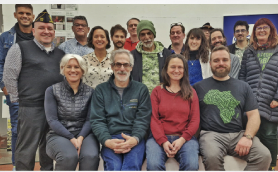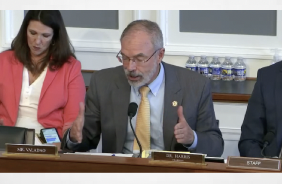Despite the “COVID pause,” spring is here. While we enjoy sunny days and green grass in Colorado, farmers are hard at work around the country tilling the soil, watching the weather, and getting ready to put seeds in the ground. Last year, more than 500,000 acres of land were registered for hemp production in the U.S. While the actual amount of acres planted and harvested were closer to 150,000, this signified a huge leap from zero acres in 2013.
On The Hoban Minute, we’ve talked to a number of guests about how 2020 hemp acreage may be affected COVID-19. However, in the face of that uncertainty, this week the Small Business Administration (SBA) announced that farmers and agribusinesses can apply for emergency loans and advances. This comes on the heels of criticism when the first round of SBA loans were announced that left much to be desired for the agricultural sector.
This Year Presents an Enormous Opportunity For Hemp Growers
It’s wonderful to see the U.S. Department of Agriculture (USDA) and the SBA respond to this call for support of farmers, who truly represent the backbone of the U.S. food supply chain. In spite of this pandemic, this year presents an enormous opportunity for hemp growers to establish their permanent position in the U.S. agricultural industry. This is the first year that U.S hemp growers are operating under a comprehensive regulatory structure, vis-à-vis the Interim Final Rule (IFR) published last fall. Because of this, far more traditional resources are available to hemp farmers than ever before, including crop insurance, agricultural subsidies, and Farm Service Agency (FSA) loans. In addition, cutting-edge technologies are showcasing just how much room for innovation exists in this industry, including the use of drones for hemp growers, by organizations like the Drone Farmers.
The industry is taking the next step forward. This is a necessary recipe to establish this crop as a competing agricultural commodity, so that it may earn its place next to corn, wheat, and soy. I am confident that we will see an increase in U.S. hemp acreage and more processing capacity particularly for the industrial uses of the crop, including grain and fiber. By and large, the focus has been on cannabinoid extraction in past years, and I for one am anxious to see the other 25,000 plus industrial uses of hemp enter the limelight.
On a more cautionary note, a lawsuit has been filed against a hemp seed provider by a North Carolina group for misrepresenting their genetics. It is imperative for farmers to be thoughtful and take proper due diligence when sourcing seed. There are reputable resources like State Departments of Agriculture in places like Kentucky and Colorado, who have now years of experience working with hemp farmers and governmental agencies to offer guidance on what steps are necessary to remain compliant, especially with the strict THC testing protocols called for in the IFR.
I have long been of the opinion to “let it grow,” and as I sit back and enjoy the beautiful springtime here in Colorado, that’s what I feel from the hemp farming community around the country. There’s a lot to be grateful for, there’s certainly still a long road to walk to regain some semblance of normalcy, and even then, it will undoubtedly be a new normal. Nonetheless, this plant has profound potential. At a time when protein deficiency is an issue facing many nations, hemp provides an enormously protein-rich grain that can feed the world. And that’s just the tip of the iceberg. We’ll see what the actual numbers are for acreage soon enough, but for now, my hat’s off to all the farmers around the country for the value and unquestionable commitment they bring to advance this industry forward. Cheers to you.

















